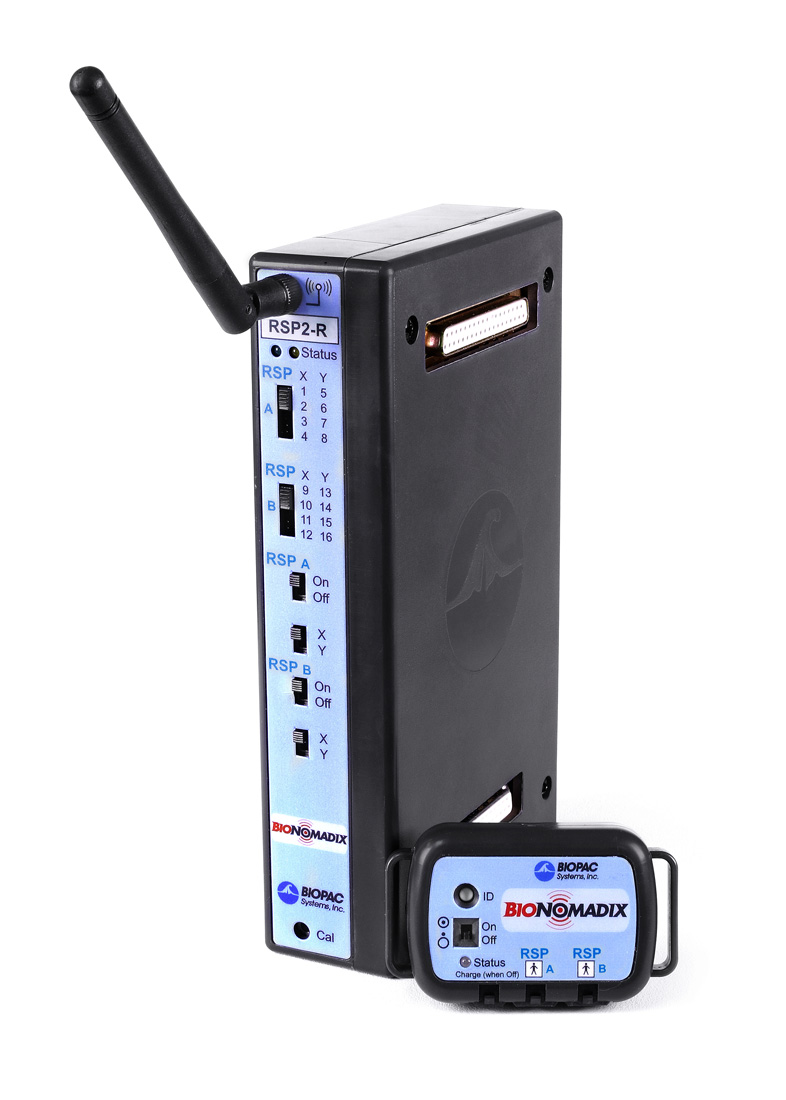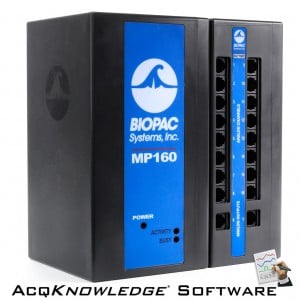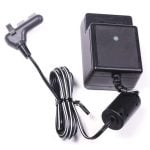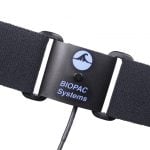The module pair is designed to emulate a “wired” connection from subject to computer, with all the benefits of a fully-wireless recording system.
Respiratory effort data can be recorded from two independent sites, typically anywhere on the subject’s torso. Attach the transmitter near or on the subject’s torso via the stretchy Velcro strap (included) or use the pocketed, stretch-mesh BioNomadix Shirt and connect the respiration transducer(s) BN-RESP-XDCR.
-
As the subject inspires, the thoracic and/or abdominal circumference expand slightly, increasing the output signal level.
-
As the subject expires, the circumference reduces, dropping the output signal level.
Use AcqKnowledge to evaluate the difference between thoracic and abdominal respiratory effort. The respiratory effort transducer is sensitive enough to measure the circumferential change associated with each heart beat, so AcqKnowledge can be used to extract both heart rate BPM and breathing rate BPM from respiratory effort signals. Using AcqKnowledge, both fast or slow response respiration data can be isolated to accommodate high quality signal component identification.
Due to battery operation of the wireless transmitter and close proximity to the subject’s body, common-mode rejection ratio is extremely high, considerably in excess of any typical wired biophysical transducer signal recording system. Accordingly, the available notch filters to remove mains interference (50 or 60 Hz) are typically not required.
Interference with other recording modules or systems is greatly minimized because the module transmitter is completely battery operated and Operates totally independently of any other recording grounds or power sources. The recording transmitter is also extremely safe to use, because there is no physical connection to supply mains.
The new BioNomadix series of wireless, wearable physiology monitoring devices for life science research noninvasively record high-quality, full-bandwidth data while comfortably allowing subjects to move freely in natural indoor environments. Each BioNomadix device consists of two parts, a transmitter that is worn by the subject to amplify and send the physiological data, and a receiver module. BioNomadix RSP transmitters use digital transmission and respiration transducers placed close to the signal source to provide excellent signal quality. BioNomadix are configured for specific signal types, so you don’t have to adjust settings on the hardware or software for high quality RSP data.
Multiple BioNomadix can be used to provide the optimum signal combination for a research study requiring biopotential or transducer signals.
When used with a BIOPAC MP System, up to 16 channels of BioNomadix data can be recorded for multi-subject or multi-parameter protocols. The system also works with multiple MP150 systems or third-party data acquisition hardware via an isolated power supply module (IPS100C). AcqKnowledge software adds the power of sophisticated automation and scoring routines for each signal type, plus customization options.
BioNomadix are available for a wide range of signals, including ECG, EEG, EOG, EMG, EGG, Respiration, Pulse, Temperature, Electrodermal Activity, Impedance Cardiography, Accelerometry, and Gyro. BioNomadix are typically dual-channel units, offering either two of the same signal or a combination of signals.
Developed and manufactured by BIOPAC Systems Inc., a leader in life science data acquisition and analysis, the new BioNomadix series delivers all the benefits of a wireless solution with the signal quality & integrity of a wired system. BioNomadix provides a cost-efficient option for uncompromised wireless physiological subject monitoring.
Product Options
Platform Options
MODULAR CONSTRUCTION
Amplifiers snap together for easy system configuration and re-configuration.
Intuitive, Elegant AcqKnowledge Software
Powerful automated analysis. Instantly & easily view, measure, analyze, transform, and report data.
Powerful MP160 Data Acquisition and Analysis System
Flexible, proven modular data acquisition and analysis system for life science research.








Stay Connected